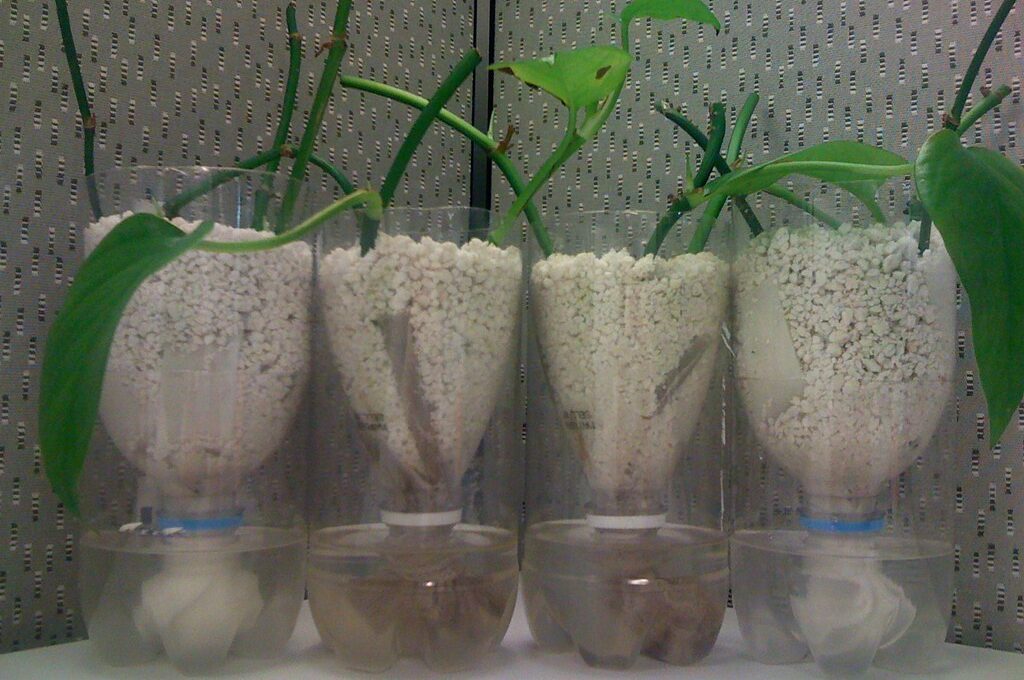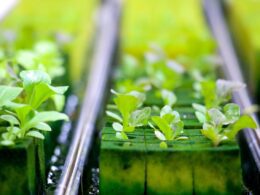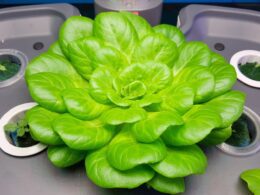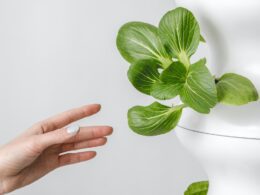Are you interested in hydroponic gardening? This method of growing plants without soil has many benefits, including faster growth, higher yields, and the ability to grow plants in small spaces.
However, not all plants are suitable for hydroponics. It’s important to know which plants thrive in this system and which ones do not.
In this article, we’ll explore which plant is not suitable for hydroponics and why. We’ll also discuss alternative gardening methods for these plants and provide tips for successful hydroponic gardening.
By the end of this article, you’ll have a better understanding of which plants to choose for your hydroponic garden and how to ensure their success. So, let’s dive in!
Understanding Hydroponics and Its Advantages
Hydroponics is a great way to grow plants indoors without soil, and it offers many advantages. With hydroponics, you can grow plants in a controlled environment, which means that you can adjust the temperature, humidity, and light to create the ideal conditions for your plants. This makes it possible to grow plants all year round and in any location, regardless of the climate.
One of the biggest advantages of hydroponics is that it’s a more efficient way to grow plants. Since the plants are grown in water, they don’t have to expend energy searching for nutrients in the soil. This means that they can focus more of their energy on growing and producing fruit or vegetables.
Additionally, hydroponics uses less water than traditional soil-based gardening, making it a more sustainable option.
There are many different techniques that can be used in hydroponics, including deep water culture, nutrient film technique, and aeroponics. Each technique has its own advantages and disadvantages, and it’s important to choose the one that works best for your plants and your space.
With hydroponics, you have the flexibility to experiment with different techniques and find the one that produces the best results for you.
Which Plant is Not Suitable for Hydroponics?
If you’re considering hydroponics, it’s important to know which plants aren’t suitable for this method.
Some plants require deep soil and extensive root systems, which aren’t possible with hydroponics.
Others may be too large or heavy for the system to support.
Additionally, some plants require specific soil microbes or pH levels that may not be achievable in a hydroponic system.
Plants that require deep soil and extensive root systems
Growing plants with deep roots can be challenging in hydroponic systems due to the limited space for root expansion. Plants that require extensive root systems, such as tomatoes, carrots, and potatoes, may not be suitable for hydroponics. These plants need deep soil to grow properly, and traditional soil gardening may be a better option for them.
In hydroponics, plants are grown in nutrient-rich water without soil, and their roots are often confined to a small space. While some plants with shallow roots, such as lettuce or herbs, thrive in hydroponics, others may struggle to grow without adequate space for their roots.
If you want to grow plants that require deep soil and extensive root systems, it’s best to stick with traditional soil gardening methods.
Plants that are too large or heavy
Can’t fit those big boys in your hydroponic setup? Some plants are just too large or heavy for this method of gardening.
Hydroponics relies on a water-based system, which means that the weight of the plants is supported by the water. If you try to grow a plant that is too big or too heavy, it will put too much pressure on the system and may cause it to fail.
Large plants, such as fruit trees or corn, require a lot of space to grow and extensive root systems to support their size. These plants simply can’t grow properly in a hydroponic system, which is designed for smaller plants that can be grown in a more controlled environment.
Similarly, heavy plants, like pumpkins or watermelons, require a lot of support to keep them upright and prevent them from toppling over. This support is difficult to provide in a hydroponic setup, which is designed to provide minimal support to the plants.
So, if you’re looking to grow large or heavy plants, hydroponics may not be the best choice for you.
Plants that require specific soil microbes or pH levels
You’ll need to keep in mind that some plants rely on specific soil microbes and pH levels that are unique to their growth, requiring a more traditional method of gardening with soil. These plants cannot thrive in a hydroponic system, as the lack of soil microbes and the controlled pH levels can lead to stunted growth or even death.
Soil microbes are essential for the breakdown and release of nutrients that plants need to grow. Each plant species has its own set of specific microbes that it relies on, which can only be found in natural soil.
Similarly, pH levels play a critical role in plant growth, as different plants thrive in different pH ranges. Hydroponic systems often use a standard pH level, which may not be optimal for certain plant species.
Therefore, if you’re planning on growing plants that require specific soil microbes or pH levels, hydroponics may not be the best choice for you.
Why Some Plants Do Not Thrive in Hydroponics
If you want your plants to thrive in hydroponics, it’s important to understand why some may struggle and how to adapt your system accordingly.
One reason why some plants do not thrive in hydroponics is due to their biology. Certain plants have evolved to grow in soil, where they receive nutrients and support from microorganisms. Hydroponic systems lack these crucial elements, making it difficult for these plants to uptake nutrients and grow properly.
Another reason why some plants struggle in hydroponics is due to their specific nutrient uptake requirements. Some plants require a specific balance of nutrients, which can be difficult to achieve in a hydroponic system. For example, plants that require high levels of calcium, such as tomatoes, may struggle in hydroponics as calcium is not easily soluble in water. Without proper calcium levels, the plant may experience blossom end rot, a common issue in hydroponic tomato growing.
To adapt your hydroponic system for plants that may struggle, it’s important to research the specific needs of each plant and adjust your nutrient solution accordingly. You may also need to add supplements or alter your growing medium to provide additional support.
By understanding the unique requirements of your plants and adjusting your system accordingly, you can ensure that your hydroponic garden thrives.
Alternative Gardening Methods for Unsuitable Plants
Looking for alternative gardening methods? Check out these options for growing plants that may be a challenge in hydroponics. While hydroponics can work for a wide variety of plants, there are some that just prefer soil. Fortunately, there are alternative gardening techniques that can help you grow these plants successfully.
One popular alternative to hydroponics is soil-based gardening. This method involves growing plants in traditional soil, either outdoors or indoors in pots. With soil-based gardening, you have more control over the nutrient levels and water content, making it easier to adjust for the needs of specific plants. This is especially helpful for plants that require more water or nutrients than hydroponics can provide.
Here are some alternative gardening techniques to consider if hydroponics isn’t working for your plants:
-
Companion planting: Certain plants can benefit others by repelling pests or providing nutrients. For example, marigolds can help control nematodes in the soil, while beans and peas can fix nitrogen levels.
-
Raised bed gardening: This technique involves building a bed above ground and filling it with soil. Raised beds can be easier to manage and provide better drainage for plants that prefer drier soil.
-
Container gardening: If you’re short on space or don’t have access to outdoor soil, container gardening is a great option. You can grow plants in pots filled with soil, making it easy to move them around as needed.
-
Lasagna gardening: Also known as sheet composting, this technique involves layering organic materials to create a nutrient-rich soil. This can be a great option for plants that require a lot of nutrients.
-
Vertical gardening: This technique involves growing plants on surfaces such as walls or trellises. It’s a great option for plants that prefer drier soil or need more space to grow.
By trying out these alternative gardening techniques, you can find the best fit for your unsuitable plants and ensure they thrive.
Conclusion and Tips for Successful Hydroponic Gardening
Now that you’re aware of alternative gardening methods for plants that aren’t suitable for hydroponics, let’s focus on the tips and techniques for successful hydroponic gardening.
First and foremost, it’s important to choose the right plant for hydroponics. Plants that have a shallow root system and prefer moist environments, such as lettuce, spinach, and herbs, are great choices for hydroponics.
One of the most crucial factors in hydroponic gardening is maintaining the correct nutrient balance in the water. It’s essential to closely monitor the pH levels and nutrient levels in the water, as any imbalance can lead to plant stunted growth or even death. Additionally, ensure that your hydroponic system has proper aeration to provide oxygen to the roots.
Finally, it’s important to regularly maintain your hydroponic system by cleaning and sterilizing it to prevent the growth of harmful bacteria and fungi. Regularly monitor your plants for any signs of disease or pests, and take necessary action to prevent their spread.
With these tips and techniques in mind, you can enjoy a successful hydroponic garden and reap the benefits of fresh, healthy produce.
Frequently Asked Questions
What is the history of hydroponics and how has it evolved over time?
If you’re curious about the history of hydroponics and how it’s evolved over time, you’re in the right place.
The history of hydroponics can be traced back to the ancient Babylonians and Aztecs who used hydroponic techniques to grow crops in water.
Fast forward to the 20th century, and hydroponics became a popular method for growing crops in areas with poor soil quality.
Over time, hydroponics has evolved to include a wide range of systems, including aeroponics and aquaponics.
With the evolution of hydroponics, we’ve seen an increase in the efficiency and sustainability of crop production.
It’s amazing to see how far this method has come!
Are there any cultural or societal factors that have impacted the popularity of hydroponics?
Cultural barriers and economic implications have played a significant role in the popularity of hydroponics. Some cultures view soil-based agriculture as the only legitimate form of farming, while others simply lack the knowledge and resources to adopt hydroponics.
Additionally, the initial investment required for hydroponics can be a barrier for individuals or communities with limited financial resources. However, as the benefits of hydroponics become more widely known, including increased crop yields and reduced water usage, more and more people are overcoming these barriers and embracing this innovative form of agriculture.
What are some common misconceptions about hydroponic gardening?
Are you interested in hydroponic gardening but hesitant to give it a try because of common misconceptions? Let’s debunk some of those myths.
One of the most common misconceptions is that hydroponics is too expensive. While it can require an initial investment, the long-term savings on water and fertilizer make it a cost-effective option.
Another myth is that hydroponic plants are not as nutritious as soil-grown plants. Actually, hydroponic plants can contain even more nutrients because they are able to absorb them directly from the nutrient solution.
Finally, some people believe that certain plants are not suitable for hydroponics. While it’s true that some plants may be more challenging to grow hydroponically, with the right setup and technique, almost any plant can thrive in a hydroponic system.
Don’t let these misconceptions hold you back from exploring the benefits of hydroponic gardening.
Can hydroponic gardening be environmentally sustainable, and if so, how?
Hydroponic gardening has both pros and cons when it comes to environmental sustainability. On the one hand, hydroponic systems use significantly less water than traditional soil-based gardening methods and can be grown without the use of harmful pesticides. Additionally, hydroponic gardens can be grown year-round, reducing the need for transportation and storage of out-of-season produce.
On the other hand, hydroponic systems can be expensive to set up and maintain, and their economic viability isn’t always guaranteed. However, with advancements in technology and increased demand for locally grown produce, hydroponic gardening is becoming more economically feasible.
Overall, hydroponic gardening has the potential to be both environmentally sustainable and economically viable, but careful consideration should be taken before investing in this method of gardening.
What are some emerging trends or innovations in the field of hydroponics?
Looking into the future of hydroponics, there are some exciting emerging trends and innovations that are taking place.
One of the most promising areas is indoor farming, which allows for year-round cultivation of crops in controlled environments. This means that farmers can produce fresh, healthy food regardless of the season or weather conditions.
Another trend is vertical farming, which involves stacking layers of plants on top of each other in a tower-like structure. This method maximizes space and can be particularly useful for urban areas with limited land.
Overall, these new techniques are helping to revolutionize the way we think about agriculture and could play a key role in ensuring a sustainable food supply for generations to come.
Conclusion
So, now you know which plant isn’t suitable for hydroponics. But don’t let that discourage you from trying out this innovative gardening method.
Hydroponics has numerous benefits, including faster growth, higher yields, and the ability to grow plants in small spaces. To ensure successful hydroponic gardening, it’s important to choose plants that are well-suited for this method.
But if you have your heart set on growing a plant that isn’t suitable for hydroponics, don’t worry. There are alternative gardening methods, such as soil-based gardening or aquaponics, that may work better for that particular plant.
With the right plant choice and proper care, you can enjoy a thriving hydroponic garden in no time.









